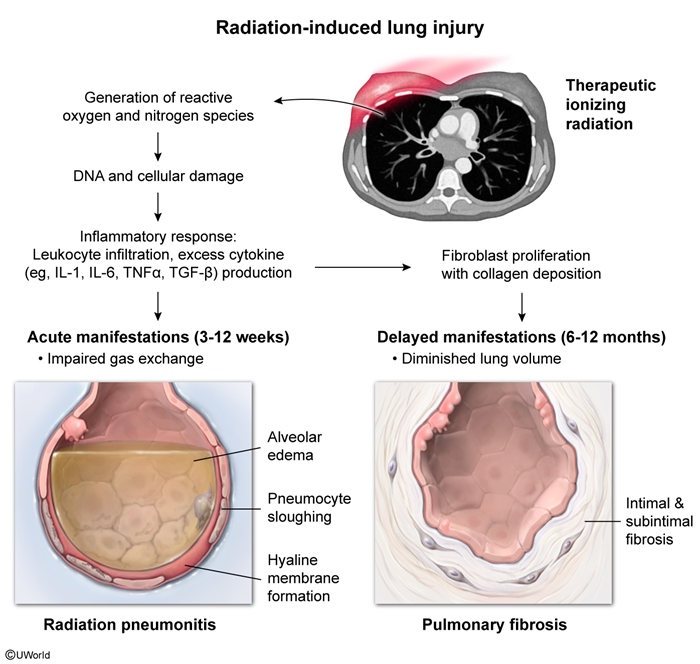Radiation Exposure
Article Sections
Introduction
Radiation exposure can have significant detrimental effects on the body. Although radiation has beneficial uses in medicine (eg, imaging, cancer treatment) and industry (eg, nuclear power), large exposures to high-energy radiation (ie, ionizing radiation) can cause acute injuries including cutaneous burns, bone marrow suppression, gastrointestinal mucosal damage, coma, and death. Radiation can also cause long-term complications, such as an increased risk for certain cancers.
Types of radiation
Atoms, the fundamental units of matter, consist of a nucleus composed of protons and neutrons, which is surrounded by orbiting electrons. An element may exist in various forms (ie, isotopes) based on the number of neutrons in the nucleus. Some elemental isotopes are considered unstable (ie, radioactive) and give off excess energy (ie, radiation) in an attempt to achieve more subatomic stability. The amount of energy given off by the element's unstable radioactive isotope (ie, the radionuclide) determines if the radiation is classified as ionizing or nonionizing.
Continue Learning with UWorld
Get the full Radiation Exposure article plus rich visuals, real-world cases, and in-depth insights from medical experts, all available through the UWorld Medical Library.
Figures

